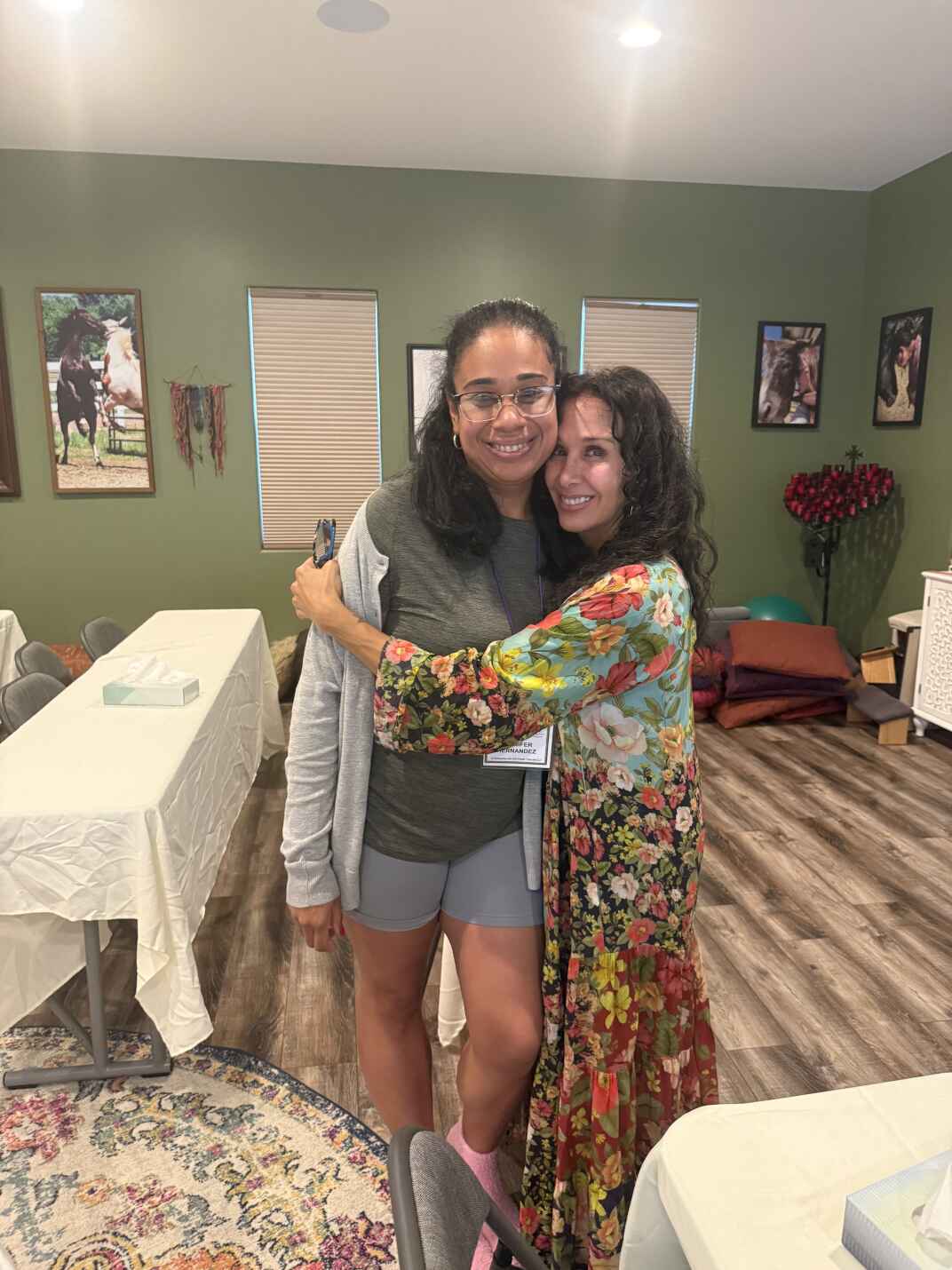As a Licensed Clinical Social Worker (LCSW) and Therapist, my work has always been centered on compassion, presence, and supporting individuals through life’s most challenging moments. Over the years, I’ve worked with clients facing a variety of emotional struggles, but recently, I had the privilege of training with Dr. Joanne Cacciatore at the Selah Carefarm for the traumatically bereaved in Arizona, a place that profoundly reshaped my understanding of grief and its role in our lives.
Dr. Cacciatore’s groundbreaking approach to traumatic grief has deepened my belief that grief is not a process that can be “fixed” or rushed. Rather, it is a sacred and human experience that deserves space, validation, and community. My time at the Carefarm helped me see that grieving is not a pathology to overcome but a profound response to loss, an expression of the love we’ve experienced.
In this blog post, I’d like to share some of what I’ve learned, how it has shaped my practice, and how my ongoing training in trauma care has allowed me to better support individuals navigating grief, especially when it’s intertwined with trauma.
Grief Is Not a Problem to Solve — It’s a Sacred Journey
One of the most powerful lessons I learned from Dr. Cacciatore is that grief is not something we can or should try to “cure.” Far too often, society expects people to “move on” quickly after a loss, pushing them to return to “normal” as soon as possible. This can create immense pressure and isolation for grieving individuals who feel as though they must suppress their pain to meet social expectations.
In contrast, Dr. Cacciatore teaches that grief is an essential and ongoing part of the human experience. It is not a weakness or something that needs to be “fixed” but rather a sign of deep love and connection. Grief is a companion that often stays with us for a lifetime, and when we honor it, we honor the love we had for those we’ve lost. Research shows that when grief is tended to with care and mindfulness, individuals are more able to integrate their loss and rebuild meaning in their lives (Cacciatore, 2011).
This has become a cornerstone of my practice. I now approach grief not as something to “overcome” but as a process to be navigated with patience, care, and respect. The more we embrace grief and allow ourselves to sit with it, rather than rushing to “get over it,” the more peace and healing we can ultimately experience.
Combining Trauma and Grief Care for Deeper Healing
In addition to grief, I have extensive training in trauma care, and this has greatly informed my approach to bereavement. The intersection of trauma and grief is something that many people experience, especially after a sudden or violent loss. For example, the grief of losing a child, a partner, or a close family member in a tragic way can create both emotional and psychological wounds that are layered and complex.
In my practice, I integrate trauma-informed care with grief support. Trauma-informed care involves understanding the impact of trauma on a person’s body and mind, and recognizing that trauma often underlies or exacerbates emotional struggles, including grief. When someone is experiencing traumatic grief, the intensity of the emotions can sometimes feel overwhelming and all-consuming.
This is where trauma-sensitive support becomes crucial. It’s not just about offering a space for someone to process their grief—it’s also about helping them recognize how their grief may be compounded by past trauma or how the loss itself has created a traumatic experience. By offering a safe and supportive environment, I aim to help individuals not only acknowledge their grief but also understand and process the trauma that may be entangled with their mourning.
Walking Beside, Not Ahead of Grief
The idea of “walking beside” someone through their grief, rather than “leading” them through it, is at the heart of my approach to bereavement care. Too often, we expect those who are grieving to “move on” or “heal” quickly, when in reality, the grief process is different for everyone, and there is no timeline for how long it should last. Grief doesn’t follow a set path, and it doesn’t have a neat, linear progression.
In my practice, I believe in creating a space where individuals can feel heard, validated, and supported without the pressure to move through their grief in any particular way. Whether someone needs to talk, cry, reflect, or simply sit in silence, I am there to witness and honor their journey. This approach aligns with Dr. Cacciatore’s belief that grief is not something to be “fixed” but rather something to be walked through with compassion and mindfulness.
This process doesn’t just benefit the individual—it also benefits their loved ones and the broader community. Grief can feel isolating, but when we offer a safe, non-judgmental space for people to express their pain, it creates a ripple effect of healing, both for the person grieving and for those around them.
The Power of Compassionate, Trauma-Informed Grief Support
Integrating trauma-informed care into grief support has been transformative for me as a therapist, and it’s a vital part of what I offer my clients. When people experience loss, especially in a traumatic way, they can feel disconnected not just from themselves but from the world around them. Their grief may also reawaken past traumas or deep-seated emotional wounds. As a trauma-trained therapist, I’m able to support clients in ways that acknowledge the complexity of their emotional responses, helping them understand how grief and trauma intersect, and offering ways to heal from both.
It’s not about “moving on” from grief but about making room for grief, allowing it to be part of your life in a way that honors the love you’ve experienced, while also fostering healing. This process doesn’t erase pain, but it does offer a path toward peace, integration, and renewal.
Grief Is Love in Its Rawest Form
At the core of everything I do is the belief that grief is not a sign of weakness but a reflection of love in its most vulnerable, raw form. When we grieve, we are expressing how deeply we loved someone, how much they mattered, and how their absence leaves a hole in our lives. This truth has become the guiding light of my work with those who are grieving.
By offering a space where grief is honored, where pain is held with compassion, and where healing is possible, I help my clients recognize that they are not alone in their grief. They are part of a shared human experience, one that touches each of us deeply and unites us in our vulnerability.
Conclusion: A Mission of Healing and Connection
The work I do with those navigating grief and loss is sacred. It’s not about providing quick fixes or easy answers, but about walking beside individuals and families as they navigate one of the most difficult experiences in life. Through trauma-informed care, compassionate support, and a deep respect for the grieving process, I help others understand that grief is not a weakness to be overcome, but a journey to be honored.
As a therapist, I am honored to offer this space to individuals in their darkest moments. My mission is to normalize grief, remove the stigma surrounding bereavement, and help others see that grief is a testament to love. In supporting the grieving, we can create more compassionate communities, where loss is not hidden or ignored, but embraced as a natural, sacred part of the human experience.
Reference
Cacciatore, J. (2011). Witness to suffering: Mindfulness and compassion in bereavement care. OMEGA—Journal of Death and Dying, 63(2), 183–197. https://doi.org/10.2190/OM.63.2.e
https://www.missfoundation.org/selah-carefarm/





